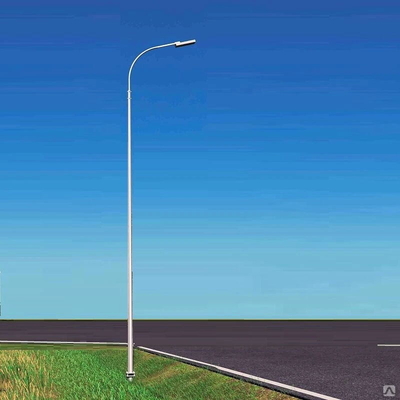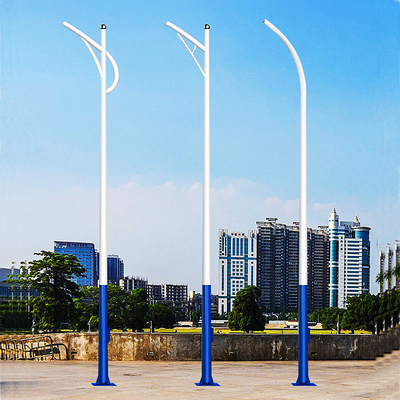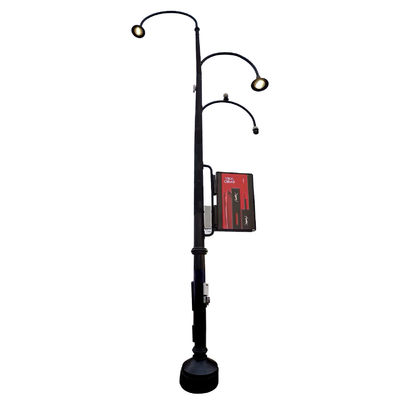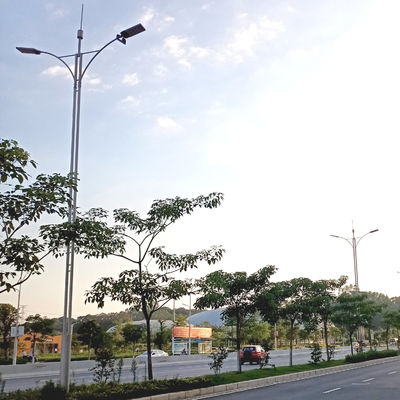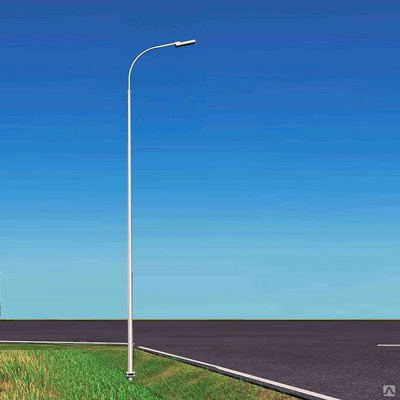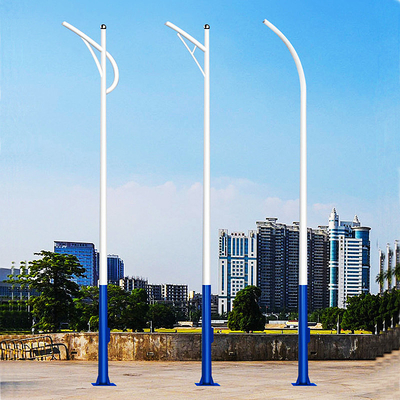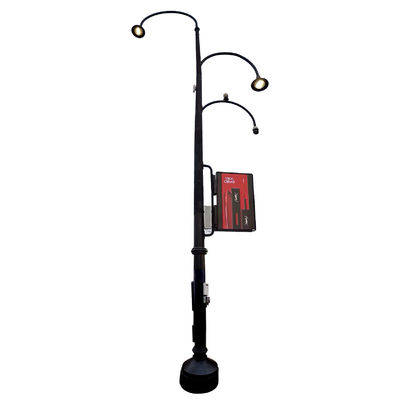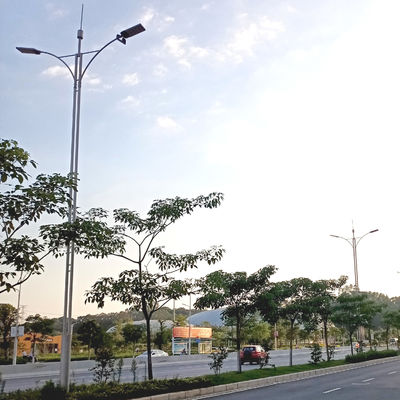-
Telecom Steel Tower
-
Transmission Steel Tower
-
Camouflaged Cell Towers
-
Galvanised Street Light Pole
-
Lattice Steel Towers
-
Solar Panel Support Structure
-
Galvanized Steel Structures
-
Traffic Signal Light Pole
-
Steel Tubular Pole
-
Rooftop Antenna Tower
-
High Mast Light Tower
-
Guyed Wire Towers
-
CCTV Camera Poles
Tubular Steel Tapered Conical Or Octagonal Street Light Poles 6m To 12m

Contact me for free samples and coupons.
Whatsapp:0086 18588475571
Wechat: 0086 18588475571
Skype: sales10@aixton.com
If you have any concern, we provide 24-hour online help.
x| Material | Hot Rolled Structural Low Carbon Steel | Steel Grade | Q345B, Q235B Or Specified Steel |
|---|---|---|---|
| Anti-corrosion Treatment | Hot Dip Galvanized Finish | Galvanization Standard | ISO 1461 2009, ASTM A123 |
| Color | Silver Or Custom Color With Additional Powder Coating | Lifespan | 20-50 Years |
| Installation Method | Buried Or Bolted By Anchor Bolts | Mounting Height | 6m To 15m |
| Steel Thickness | 3mm To 15mm, Depending On Height Of Pole | Zinc Coating Thickness | 55 To 110 Microns |
| Arm Bracket | Single Arm, Double Arms, Triple Arms Or Multiple Arms | Weight | Based On Pole Dimensions And Design |
| Welding Standard | AWS D1.1 | Wind Resistance | Up To 180km/h |
| Pole Shape | Straight Square Or Rectangular Or Round, Tapered Conical, Octagonal Or Polygonal | Applications | Roadway, Highway, Street, Garden, Park, Residence Or Commercial Lighting |
| Highlight | Octagonal Street Light Poles 6m,Tubular Steel Octagonal Street Light Poles |
||
6m to 12m Conical or Octagonal Tubular Steel Street Light Poles
Tubular Steel Tapered Conical Or Octagonal Street Light Poles 6m To 12m
What Is Street Light Pole?
Street light pole refers to all the poles used for streetlights. It includes the parts of pole shaft, base flange, mounting arm brackets and anchoring bolts. If the street light pole is buried directly into ground, there is not a base flange.
Street light pole is the essential part for utility lighting system such as roadway lighting, highway lighting, park lighting, square lighting etc. It is made of steel, Aluminum, concrete or fiberglass.
What is height of light pole?
A stand-in pole is used to determine the right height of the light pole in some instances. A general rule of thumb is to go for a height that delivers the right amount of light spread, without causing too much glare.
How tall is a light pole in meters?
The street light poles are usually between 25 and 50 feet (or 8m to 15m) tall. The height of the street light poles is considered a high-mast.
How tall is a typical street light?
The typical street lights range from 5 to 12m. There are street lights with heights of 5 to 6m on a residential estate road and 12 to 18m on main traffic routes.
What is the distance between street light poles?
The height of the pole should be less than the spacing between the two light poles. Light poles should be installed closer to the ground. The ideal height and spacing can be determined by the lighting density, speed of travel, and light source on the corridor.
![]()
Typical Street Light Pole with dual arms powered by Small Wind turbune and Solar Panel
SPECIFICATIONS OF STREET LIGHT POLE
Material: Mild steel or Aluminum
Thickness: 3mm, 4mm, 5mm, 6mm, 8mm, 10mm, 12mm etc. customized to pole height.
Pole section: round, square, rectangular, octagonal or other polygonal shape.
Pole height: 3m, 5m, 6m, 8m, 10m, 12m or customized height.
Pole shaft: straight or tapered column, fabricated from seamless tube or hot rolled steel or aluminum tubing of one-piece construction with minimum yield strength of 42 KSI.
Pole Top: The pole top is held to a tenon for external top mount luminaire and/or bracket. Consult the luminaire manufacturer for correct tenon or spigot size or drill pattern. Other pole top options include pole cap only or plain top which is typical when the pole top diameter matches the necessary slip fit dimensions.
Pole cap: A removable pole cap is provided for poles receiving drilling patterns for side-mount luminaire arm assemblies.
Mounting arm: No arm (lamp is mounted on top of pole), curved arm bended from pole, single arm, double arms or multiple arms or customized mounting kit.
Handhole/Service door: A reinforced handhole or service door with lock is provided at 500mm to 1000mm from the base end of the pole assembly. Each handhole includes an easy to install, self-contained Swing Latch handhole cover assembly. All pole assemblies are provided with a 75mmx150mm rectangular handhole. Handhole dimensions are customized according to project requirements.
Base plate: The street light pole is fabricated with a welded base plate for fixing to anchor bolts that are embedded in the concrete pedestal foundation. For buried installation, a base plate is not included and the pole is planted into ground or concrete foundation directly.
Anchor Bolts - Anchor bolts conform to ASTM F1554 Grade 55 or 6.8S or 8.8S and are provided with two hex nuts and two flat washers. Bolts have an “L” bend on one end and are galvanized a minimum of 12" on the threaded end.
Hardware: All structural fasteners are galvanized high strength carbon steel. All non-structural fasteners are galvanized or zinc-plated carbon steel or stainless steel.
Anti-corrosion finish: standard finishes are hot dip galvanized (for steel pole), prime painted or powder coating. Additional finish options available upon request.
Design Criteria: Please reference Design Criteria Specification for appropriate design conditions.
Category of Lighting Poles
1, Utility street light poles
2, Roadway and highway light poles
3, Residential community yard or garden lighting poles
4, High mast lighting poles
5, Multi-purpose Smart lighting poles
Manufacturing Procedures of Street Light Poles
1, Unrolling and cutting to be flat plates
The rolling shear machine cuts the rolled material into trapezoidal or rectangular flat sheets. The materials used in this process varies according to the customer's requirements and specifications of light poles.
Before cutting, adjust the slope of the longitudinal shear machine to match the required size of the longitudinal shear, and fix the position of the steel plate to ensure the maximum size of the remaining material, so that the remaining material can be utilized to minimize the waste of materials.
Before opening the material, it is necessary to check the operation of the roller shear equipment, clear the debris on the track, and maintain the equipment in good working condition.
![]()
2, Folding and Forming Flat Plate to be Tubular Pole
The length of trapezoidal materials is produced and manufactured according to customer requirements for the poles. Due to the different thicknesses of materials used, the size of the selected bending machine will also vary, ranging from 160 tons to 600 tons, with lengths ranging from 12 meters to 14 meters, and even longer up to 16 meters.
3, Welding the joint seam
Use a submerged arc welding machine (SAW) to weld the joint seam, it’s an automatic process controlled by CNC system, ensuring the joint is strong and seamless, the welding quality is good enough and matches the manufacturing standards.
![]()
4, Straightening and bending
Because the poles will deform to a certain extent during welding, they must be reshaped and straightened mechanically to ensure correct straightness and quality. According to the customer's production process requirements for street lights, it may also be necessary to bend the pole body to a certain angle to meet lighting requirements..
5, Grinding
Grind the burrs on the cut edges and welding if necessary. This process is optional and can be completed manually. But if it is a large-scale production of street lamp poles, it is recommended to use mechanical operations, which can save labor costs and time costs.
6, End trimming
The end trimming process is to flatten both ends of the completed pole body to ensure that the pole section is perpendicular to the centerline, without any unevenness in angle or height. At the same time, after flattening, the end face is polished.
7, Hot Dip Galvanizing
The quality of galvanizing directly affects the quality of the lamp pole. Galvanizing is required to be carried out in accordance with national standards, and the surface after galvanizing is smooth without color difference and free from sagging. It is a hot dip galvanization process for the anti-corrosion treatment of street light poles.
![]()
8, Powder Spray Coating (optional process)
This process mainly involves the automatic spraying of street light poles through the spraying production line. The main purpose of spray coating is for aesthetic decoration and additional corrosion prevention. Firstly, the surface of the galvanized lamp pole should be polished to ensure a smooth surface. Then straighten the polished light pole, align the pole section, and ensure that the straightness of the pole is above 99%. The caliber deviation requirements are: small pole ≤ ± 1mm, large pole ≤ ± 2mm. Subsequently, it is sent to the spraying room and sprayed according to the color required by the customer. Finally, it is sent to the drying room. The temperature and insulation time of the drying room must strictly comply with the requirements of each plastic powder to ensure the adhesion and smoothness of the plastic powder.
After all the above street light pole production processes are completed, inspection and packaging are completed, and the final products can be shipped.



